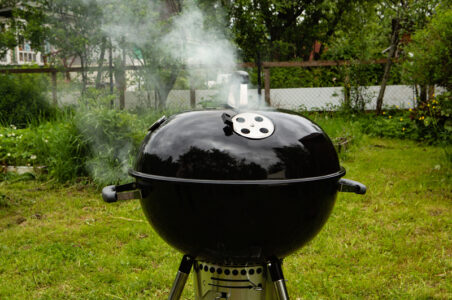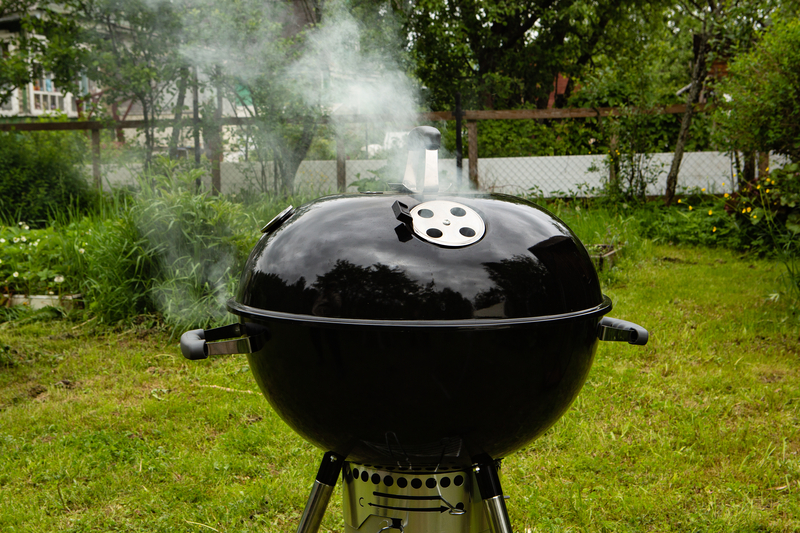 When it comes to using a charcoal grill, many people grapple with whether to leave the lid open or closed.
When it comes to using a charcoal grill, many people grapple with whether to leave the lid open or closed.
The decision can hugely impact the cooking process, influencing both heat control and flavor.
Keeping the lid closed generally provides higher temperatures and more even cooking, ideal for thicker cuts that require indirect heat.
For those who enjoy a classic sear, leaving the lid open can enhance their grilling experience by allowing hot air to escape, which is beneficial for quick-cooking items like burgers or sausages.
This can, however, lead to longer cooking times and require more frequent charcoal adjustments.
Personal preference ultimately plays a key role, as each method offers distinct advantages.
Understanding the nuances of lid placement lets grill enthusiasts tailor their approach based on what they’re cooking.
While some swear by the lid-down method for its efficiency and flavor preservation, others might prefer the hands-on interaction of an open grill.
Both methods have their place in backyard grilling.
Grill Lid Basics

When using a charcoal grill, the position of the grill lid plays an essential role in controlling heat and cooking style.
Keeping the lid closed helps trap heat inside, creating an oven-like environment.
This is perfect for slow-cooking tough cuts of meat or large items like brisket.
Leaving the lid open allows more air to flow through the grill, which increases fuel consumption but lets you achieve a higher, direct heat.
This can be beneficial for searing.
Quick-cooking items, such as smaller cuts of meat or vegetables, will benefit most from this technique.
A closed lid helps control flare-ups, protecting food from burning when fat drips on the coals.
It also helps to maintain a consistent cooking temperature, crucial for getting an even cook.
The impact of the lid position also depends on the type of barbecue being prepared.
For traditional barbecue recipes that require smoking, a closed lid is usually recommended.
On the other hand, if a person is simply grilling burgers, an open lid might achieve those desirable grill marks.
Key points to consider when deciding on lid position:
- Temperature Control: Closed lid maintains heat; open lid increases airflow.
- Cooking Style: Closed for baking or roasting, open for searing.
- Food Type: Larger cuts and slow-cooking dishes benefit from a closed lid.
Direct vs Indirect Grilling

Direct and indirect grilling are essential techniques that can greatly influence the outcome of your barbecue.
Direct grilling involves placing food directly over hot coals, perfect for foods requiring short cooking times.
The lid can remain open to maintain a high heat, making it ideal for burgers, steaks, and vegetables.
Indirect grilling, on the other hand, is ideal for foods that need longer cooking times.
This technique involves placing the food away from the coals, allowing it to cook with indirect heat.
By keeping the lid closed, it traps heat, turning your grill into an oven.
This method suits larger cuts of meat like roasts or whole chickens.
Here’s how to set up your grill for each method:
- Direct Grilling: Spread coals evenly across the grill base. Cook with the lid open to apply high direct heat.
- Indirect Grilling: Arrange coals on one side or around the edges. Place food on the opposite side, and keep the lid closed.
Choosing the right method depends on the dish you’re preparing.
Working with different grilling methods allows cooks to better control temperatures and cooking times, enhancing the final flavors and textures.
Understanding when to open or close the lid is key to mastering these two foundational grilling techniques.
Managing the Grilling Temperature
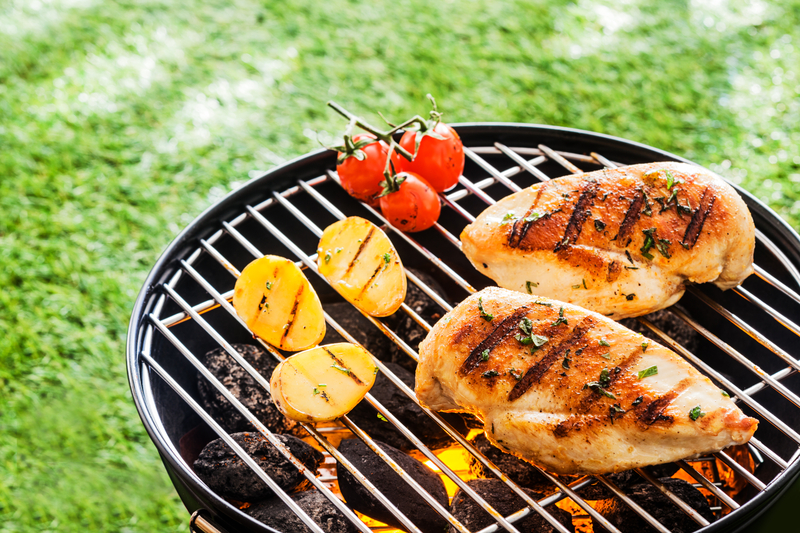
Proper management of grilling temperature ensures evenly cooked food on a charcoal grill.
Mastering temperature control and preheating are crucial steps in achieving desired results.
Temperature Control Techniques
Managing the cooking temperature on a charcoal grill involves using the vents effectively.
The grill has two vents: one at the top and one at the bottom.
These regulate airflow, which controls the heat. Increasing airflow raises the temperature, while reducing it lowers the heat.
To achieve maximum airflow, fully open both vents.
For low and slow cooking, partially close the top vent, keeping the bottom slightly open.
Direct grilling requires higher temperatures, so both vents should be more open.
Indirect grilling benefits from a lower temperature, achieved by closing the vents partially.
Monitoring the internal grill temperature with a thermometer is essential.
Adjust the vents accordingly to maintain the ideal cooking temperature.
Consistent checking is necessary to avoid temperature spikes.
Preheating the Grill
Preheating ensures even heat distribution across the grill surface.
Start by placing a full chimney of charcoal, then light it and allow it to ash over.
This process typically takes 15-20 minutes.
Once the coals are ready, spread them evenly over the base of the grill.
Close the lid and keep the vents open to let the grill reach the desired temperature.
Preheating creates a hot environment, reducing sticking and ensuring food cooks uniformly.
A well-preheated grill promotes better convection, enhancing the grilling process.
Make sure to gauge the heat using a grill thermometer before placing the food on the grate.
Grilling Different Types of Food
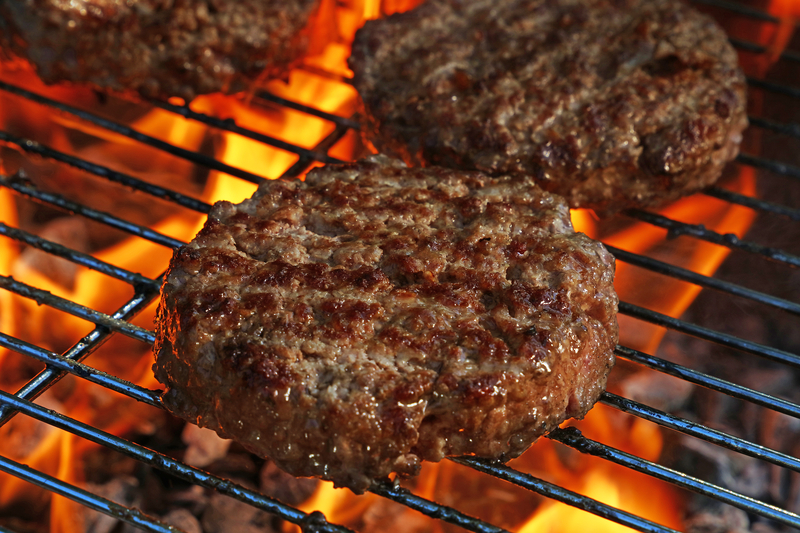
Grilling involves a variety of techniques depending on the food type, such as managing heat levels and knowing when to leave the grill lid open or closed.
Steaks and burgers, for example, benefit from specific timing and heat settings, while ribs and whole chickens require a different approach.
Grilling Steaks and Burgers
For steaks and burgers, a high-heat, direct cooking method works best.
Keeping the lid open allows for better control over flare-ups.
Steaks should be seared over high heat for 2-3 minutes per side for a medium-rare result.
Use direct heat to develop a crust while preserving juiciness inside.
For burgers, achieving a crispy exterior requires similar attention.
Flip burgers only once and avoid pressing down to retain juices.
Grilling Thin Steaks and Quick-Cooking Foods
Thin steaks and quick-cooking foods like shrimp benefit from high heat but for shorter durations.
The lid should be left open to enable close monitoring.
Overcooking is a risk, so aim for a quick, intense sear lasting just a couple of minutes per side.
Use high heat to lock in flavors while preventing dryness.
Quick-cooking vegetables can pair well with these steaks, needing minimal time to develop slight charring and softening.
Grilling Ribs and Whole Chickens
Ribs and whole chickens require a low-and-slow approach with indirect heat.
Here, keeping the lid closed is crucial to maintain a steady temperature and cook evenly.
Ribs often need 2-3 hours to become tender, while whole chickens can take longer.
Indirect heat ensures even cooking throughout without burning.
Consider basting every 30 minutes to keep moisture levels high and enhance flavors.
A meat thermometer is useful to confirm doneness.
Grilling Hot Dogs and Similar Foods
Hot dogs can be grilled quickly over medium to high heat.
The choice between open or closed lid depends on personal preference for char.
Closed lid cooking can impart a smokier flavor, whereas an open lid offers more control.
Turn hot dogs every few minutes to cook evenly.
Similar items like sausages also enjoy high heat but watch carefully to avoid splitting.
Rest hot dogs briefly before serving to allow flavors and juices to settle.
Special Grilling Techniques

Enhancing your grilling with special techniques can elevate the cooking process and improve flavors.
Key methods include achieving the perfect sear on meat, applying a reverse sear technique for thicker cuts, and utilizing a smoker box for an aromatic depth.
Mastering the Sear
Searing creates a flavorful crust by cooking meat quickly at high temperatures.
It is critical for locking in juices.
- Use a two-zone fire setup for effective searing.
- Preheat the grill with the lid open until the coals turn ashy.
- Place the meat directly over the hot coals, letting it develop a browned exterior within a few minutes.
- Flip once for even cooking, aiming for a golden-brown crust on both sides without prolonged exposure to high heat, which can dry out the meat.
Implementing a Reverse Sear
The reverse sear technique involves slowly bringing the meat to temperature before searing.
This is ideal for large, thick cuts like ribeye or pork chops.
- Begin cooking the meat indirectly over low heat with the lid closed.
- Monitor the internal temperature using a thermometer, aiming to reach about 10-15 degrees below your target doneness.
- Once at the desired temperature, move the meat over direct heat with the lid open for a quick sear.
- This ensures an edge-to-edge even cook and a crisp outer texture, creating a perfect balance in texture and flavor.
Using a Smoker Box
A smoker box adds a smoky flavor by harnessing the power of wood chips.
- Fill the smoker box with soaked wood chips, selecting types like hickory, mesquite, or applewood for different flavor profiles.
- Place the box directly on the coals or under the grate.
- Keep the lid closed to allow the smoke to infuse the meat, adjusting airflow as needed through the grill vents.
- Use consistent temperatures to avoid overwhelming the meat with too much smoke, maintaining a balanced taste and aroma.
Maximizing Flavor
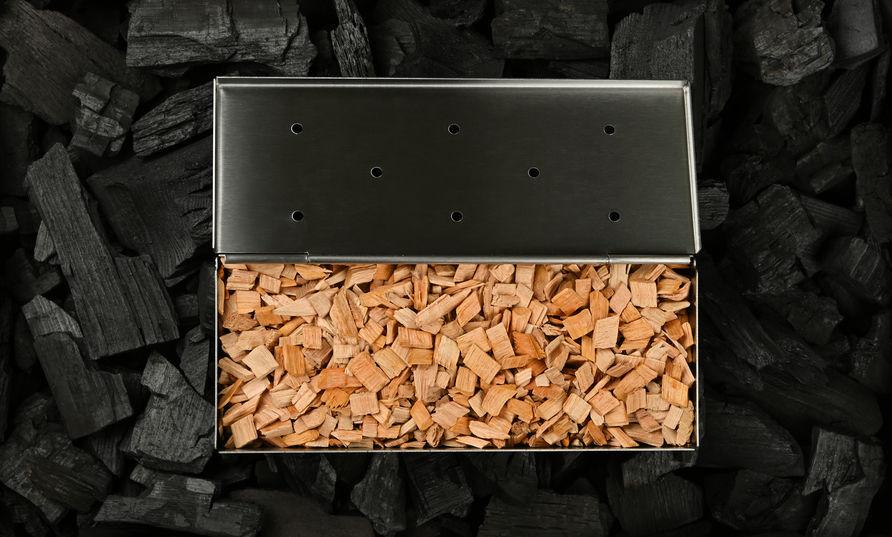
For grilling enthusiasts, achieving that perfect smoky flavor is a key goal.
One effective way is to use soaked wood chips.
By soaking them in water for around 30 minutes before adding to the grill, they produce a more sustained smoke, enhancing the flavor of the meat.
The position of the lid can also play a significant role.
Leaving the lid closed helps to trap smoke, enriching the flavor profile.
Keeping it open, conversely, can result in less smoky depth.
Experiment with lid positions to find the balance that best suits your taste.
Creating a caramelized crust is another method to enhance flavor.
Applying a sugar-based rub or glaze and searing the meat quickly over high heat forms a richly flavored crust.
This caramelization brings out a sweet and savory contrast that many grillers seek.
Incorporating varied wood chips like hickory or mesquite can also add distinct flavors to the grilled food.
Each type of wood imparts its own unique aroma, providing an opportunity to experiment with different taste profiles.
By understanding these techniques and tools, anyone can elevate their grilling experience.
Adjusting small factors and paying close attention to detail can result in significantly improved flavor outcomes.
Avoiding Common Grilling Issues
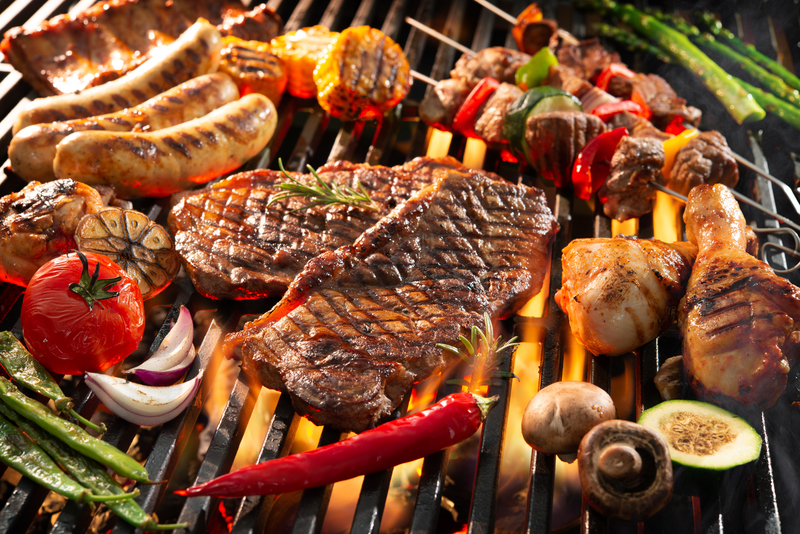
Grilling with a charcoal grill presents unique challenges, such as controlling flare-ups, achieving uniform doneness, and preventing charring.
Each issue requires attention to detail and proper technique to ensure a successful grilling experience.
Controlling Flare-Ups
Flare-ups occur when fat drips onto the coals, creating bursts of flame.
These can lead to charring and uneven cooking.
To manage them, keeping a spray bottle of water or a grill-safe fire extinguisher nearby is essential.
Reducing the amount of fat on meats before grilling can also help.
When grilling with the lid open, the grill is more likely to experience flare-ups due to increased oxygen.
Closing the lid reduces oxygen intake, helping to minimize flare severity.
Adjusting the position of the meat and using indirect heat methods can further reduce flare-ups and keep food safe and evenly cooked.
Ensuring Uniform Doneness
Uniform doneness is crucial for both flavor and safety.
Uneven cooking can leave portions of the meat underdone, especially in thicker cuts.
It helps to start with room-temperature ingredients for even heat distribution.
Using a two-zone fire method is beneficial.
One side should be hotter for searing, while the other is cooler for finishing.
This technique, with the lid closed, helps maintain a consistent temperature across the grill.
A reliable meat thermometer is indispensable for checking internal temperatures, ensuring meats are thoroughly cooked.
Preventing Charring and Uneven Cooking
Charring often results from excessive heat or prolonged exposure to direct flames.
Managing heat is vital. Adjust charcoal placement to create direct and indirect heating zones.
Grilling with the lid closed helps control flame contact and heat retention.
Incorporating a drip pan can prevent fat from igniting and causing flare-ups.
Frequently turning food ensures even cooking.
Using marinades or oil lightly can help protect food surfaces from harsh heat.
Monitoring the grill’s temperature and adjusting vents aids in maintaining an appropriate cooking environment, reducing the risk of uneven cooking and charring.
Advanced Grilling Concepts
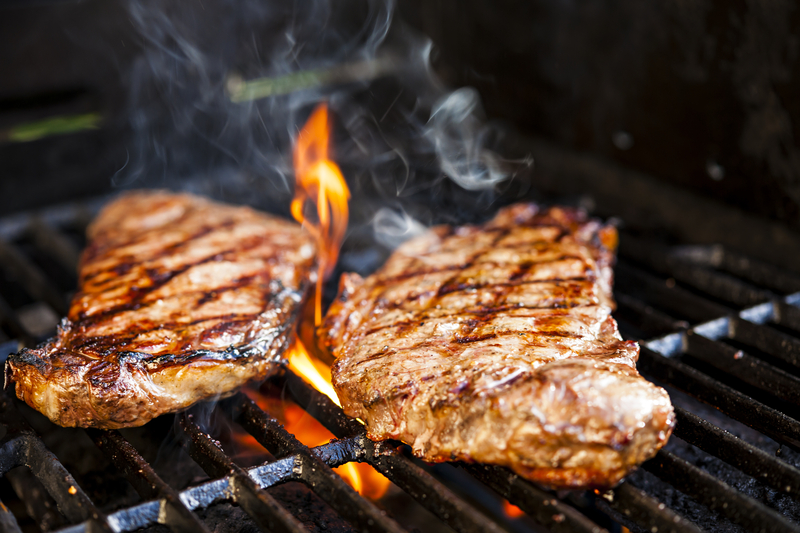
Mastering advanced grilling involves understanding both direct and indirect heat.
Direct heat is used for quick searing and achieving those desired grill marks.
Indirect grilling helps in slow cooking, allowing larger cuts of meat to be cooked evenly without burning.
Gas grills provide precise temperature control, making it easier to maintain a constant internal temperature.
Charcoal grilling, though less controlled, imparts a unique smoky flavor.
Using a smoker box in a gas grill can mimic this effect, adding depth to the grilled food.
Maintaining moisture retention is crucial for juicy results.
One practice is to keep the lid closed to create convection heat, circulating airflow around the food.
This technique can be particularly effective for larger cuts that benefit from even heat distribution.
Understanding the correct ignition technique is vital.
For charcoal, arranging coals for optimal burn and heat release is essential.
They can be spread for uniform heat or banked to create zones for varied cooking.
Tracking internal temperature with a reliable thermometer helps ensure food safety and quality.
Proper measurements prevent overcooking while retaining flavor and texture.
The balance of grill marks and moisture retention is key to superior grilled food.
Experimenting with an open or closed lid allows for customization of textures and flavors, enhancing the grilling experience.

